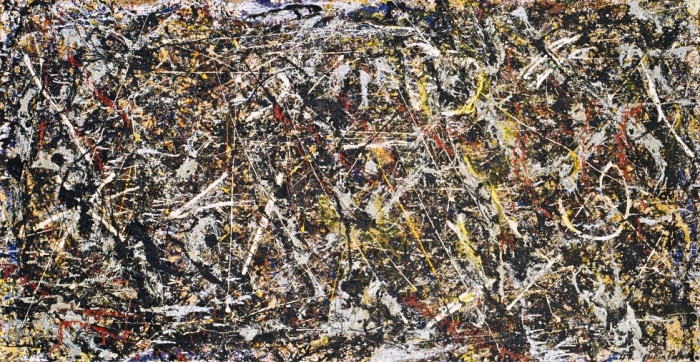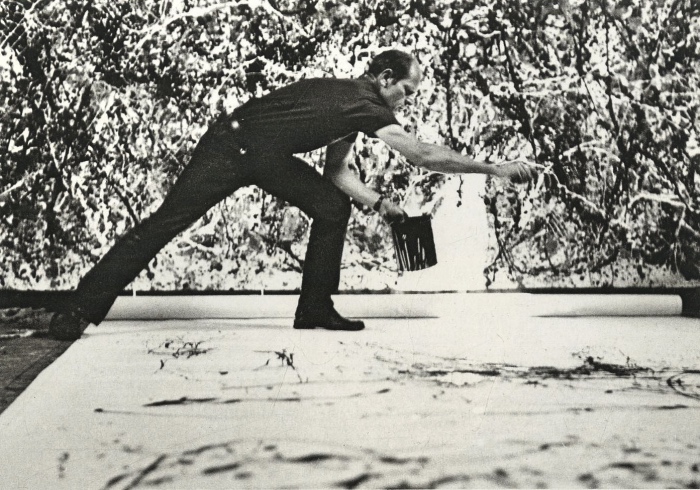Action Painting, what it is and why it is a revolutionary art
Have you ever wondered what makes Action Painting so unique and revolutionary? This art form, also known as action painting, represents a real challenge to traditional art conventions.
Originating in the 1940s and 1960s, Action Painting is closely related to abstract expressionism. That is why it is essential to understand this style first in order to appreciate what is a significant part of modern art history.
What is Action Painting

Pollock, Alchimia
Action Painting, or action painting, is characterized by a dynamic painting technique in which color is literally thrown or dripped onto the canvas in a spontaneous manner.
This approach contrasts Action Painting with tradition and stands as a revolutionary art that subverts the traditional rules of drawing, design, and the study of form and color. In Action Painting, the spontaneous gesture itself becomes art!
ACTION PAINTING, JACKSON POLLOCK AND DRIPPING
Jackson Pollock is the greatest exponent of Action Painting. It was he who started the revolution in art with the dripping technique of dripping paint and colors onto large canvases.
In essence, Pollock, by rejecting the use of an easel and preferring to work with the canvas placed on the floor, felt more involved in the creative process, almost as if he was an integral part of the work.
ABSTRACT EXPRESSIONISM AND SPIRITUALITY IN POLLOCK’S WORK
Pollock was deeply influenced by the traditions of Native American Indians, particularly their prayer rituals that took place around the fire. He likened the canvas to a hearth and himself to a shaman, seeking to convey his interiority through a spiritual and spontaneous exploration.
In Action Painting, in fact, the creative process is driven by the unconscious. The artist immerses himself in a trance-like state, allowing his unconscious to directly influence the making of the work.
This way of making art is also reflected in the way random elements, such as cigarette butts, dirt or stones, could become part of the painting.
It should also not be forgotten that there is a very close connection between Action Painting and Abstract Expressionism since artists such as Pollock were influenced by the introspective expressionist approach in the creation of their works.
In the creative process of Expressionism, the exploration of unconscious emotions is considered the way to a new form of art, which no longer wanted to depict reality but the inner contradictions of human beings and the complex society of the twentieth century.
THE PHILOSOPHY OF ACTION PAINTING
Action Painting is distinguished by its impulsive and unplanned nature. This style is not intended to represent an objective or subjective reality, but rather desires to release the artist’s accumulated tensions. It is ultimately a description of unease within a welfare society where everything seems to be already foreseen and planned.

Pollock al lavoro nel suo studio
Although he was initially misunderstood and derided by critics and the public, Pollock’s work gained the recognition it deserved internationally, becoming a landmark in twentieth-century art.
Action Painting, and in particular Jackson Pollock’s works such as Alchemy, have left an indelible mark on art history, influencing generations of artists.
Follow me on:
About me
In this blog, I don't explain the history of art — I tell the stories that art itself tells.


